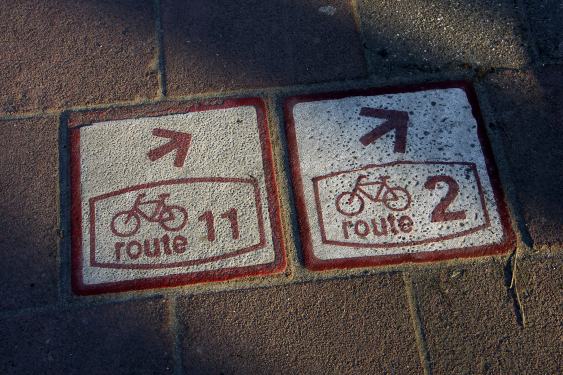
Many charities use cycling as a way to raise funds. They chart a course and enlist cyclists to complete the course in exchange for pledges from donors. The more pledges a rider has, the more money he or she will raise for the charity.
This idea has been popular for many years. It incorporates individual accomplishment into a group activity.
Each rider plays a small but significant role in raising money for whatever cause the event focuses on. And, in the end, when all the small contributions are tallied, a substantial sum of money can be obtained.
Bicycles are good for this purpose because they combine transportation and the athleticism required to participate in a charity run. In this manner, a participant can travel from one end of the course to the other, with modest breaks in areas where the bike can coast. This makes it easier for less fit or less experienced cyclists to participate.
With the popularity of such events, it’s surprising that no high profile cycling events exist to raise money for cycling accommodations and infrastructure. Instead, one state after another proposes to impose fees or taxes on bicycles with the intention of making cyclists pay for their use of the roads.
What’s most amazing about this imposition of taxes and fees on cyclists is that the only roads where anyone pays a use fee are toll roads, and in most, if not all places, bicycles are prohibited from such roads. Yet, government representatives feel compelled to make cyclists pay to use all roads.
Cyclists do pay to use roads through general taxes, just like everyone else. But since cyclists don’t pay for vehicle registration, those who do resent them.
All of this could easily be rectified if cyclists produced a voluntary contribution to roads and bicycle infrastructure. It wouldn’t have the same personal impact as a fee or tax, which everyone must pay. But, it would raise money in a voluntary fashion.
Instead, a week could be set aside each year for cycling oriented road and infrastructure improvement fundraising. Across the country, events could be scheduled with a view to raising awareness about alternative forms of transportation.
How the money would be spent would be determined ahead of time. Ongoing road projects with slim budgets could request funding or startup projects might apply for a grant to get their feet off the ground.
Regardless of how the money is used or who determines its fate, using cycling fundraising events to raise money for cycling is an approach whose time has come. If something like this caught on, cycling could become self-sustaining. It would exist through a cycle of self growth and self renewal.
In this way, cycling could flourish. Without the usual animosity between drivers and cyclists, borne of an unending rivalry for money, cycling would be free to take on a life of its own.
Astonishingly, cycling advocates, who spend so much of their time trying to get the government to allocate money for bicycle infrastructure, haven’t tried the bicycle fundraising approach. While it probably won’t fully fund all necessary infrastructure, by paying a portion of it, cyclists will be on stronger ground to ask the government to make up the difference.
We should eagerly await the first annual bicycle fundraising for bicycling event, for it marks the beginning of self-sustenance for cycling and the end of petty bickering over who pays what taxes and fees.



3 Responses to Bicycle Fundraising For Bicycling